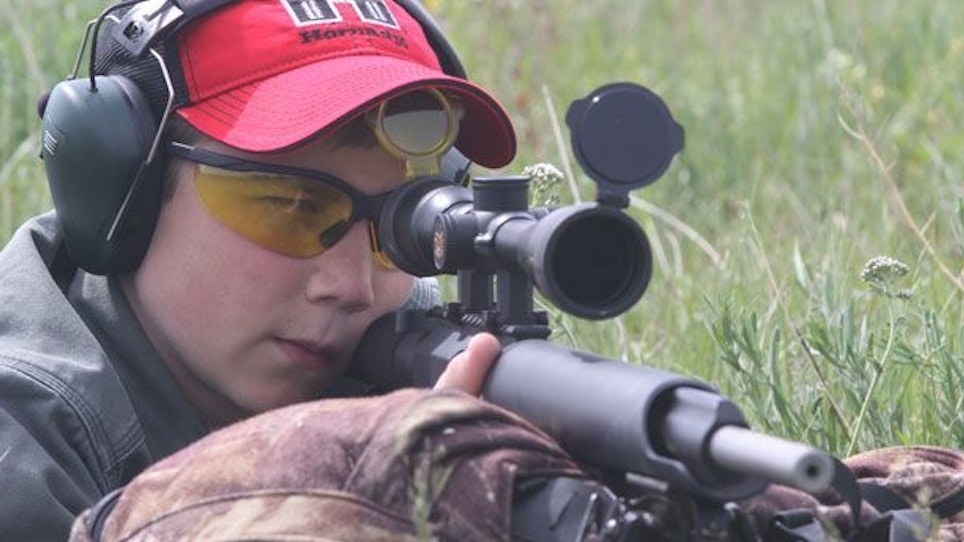Are you an accuracy zealot? Do you have a love affair with plinking? Are you on the hunt for something to pursue with your .17 Hornet? Do rodents invade your dreams more than zombies?
If you answered, “yes” to any of these questions you might be a candidate for the small stuff. What’s the small stuff? Rodents are the small stuff, yet they provide a huge payoff when it comes to varmint action from coast to coast.
To go through the list of hunting-worthy species would bore you, but suffice to say that nearly five-dozen species inhabit environments from the Arctic to the Southwest deserts. In reality, only a handful deserve attention for the serious varmint shooter.
Why Downsize?
So why go after these tiny targets? High on the list is the opportunity to put your smaller caliber centerfires and rimfires into play. Shooting paper and metal sharpens marksmanship, but nothing can compare to trying to tip over a 13-lined ground squirrel as it scampers through grass 125 yards away and all you’re armed with is a .22 long rifle.
The .17 HMR is a riot to shoot, but you can’t really put it into play for serious predator chores, especially on 30-pound coyotes. You can, however, engage a variety of rodent targets with the .17 and .22 if you really want to challenge your shooting skills at a reduced cost.
This time of year is great for rodent wars. Short grass in pastures, the emergence of young-of-the-year and a lack of other meaningful species to hunt open the door to rodent hunts. Farmers, ranchers and landowners are open to rodent warriors as well. Since gophers and ground squirrels thrive in most settings, dig holes and munch on grains, and grass, they welcome the culling activities.
Choosing Your Targets
What are some of the heavyweights in the diminutive world of rodents? First, look at the previously mentioned 13-lined ground squirrel. Found in pastures across the Midwest, across the Great Plains and into the West, this sneaky, rat-sized rodent provided me with my first varmint adventure. Armed with an open-sight rimfire I cruised my grandpa’s pastures in his old golf cart looking for the beady eyes of the striped bandit. Some areas are so overrun with these gophers that you can literally shoot a brick of .22 ammunition in an afternoon.
A favorite of the northern mixed grass prairies is the weightier Richardson’s ground squirrel. They bobble across the southern Canadian Prairie Provinces, Montana, North Dakota, South Dakota and even into Minnesota. Weighing in at 8 to 10 ounces with a 10-inch length, this rodent is definitely a heavyweight worthy of the zip a .17 can produce.
Best shooting opportunities occur from June through early fall. Pups emerge in June to provide ample targets. When temperatures spike expect the ground squirrels to be in the shade of their dens, but in average temperatures you can shoot all day long. Bring lots of ammunition.
If you still want a bigger target look to the West and Northwest. Although not quite as big as a ground hog, but getting awfully close to the size of a prairie dog, is the California ground squirrel. Its 2-pound body extends 16 inches in overall length making it the perfect target for your hotrod plinking machine. From southern Washington to southern California these ground squirrels thrive in rolling hills that favor agricultural production. They prefer dry-land barley and irrigated alfalfa fields, but have also been known to raid fruit and vegetable fields irritating weekend and professional farmers alike.
Spring is a top time period to stalk these plump rodents, but in some arid areas you also can see them easily throughout the summer months and even into winter along coastal stretches. Pack along lots of ammunition and get off the beaten path for permission. Everyone on the “left” coast isn’t opposed to shooting, especially if their discovering huge holes in their pastures, gardens and yards.
Predators may not be prime this time of year, but rodents are prime any time you can put the crosshairs on one.






